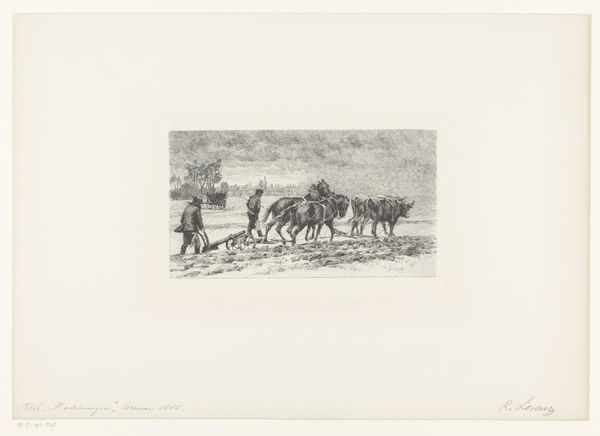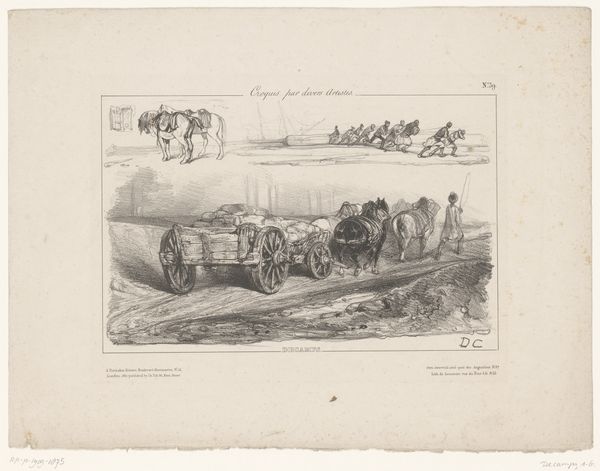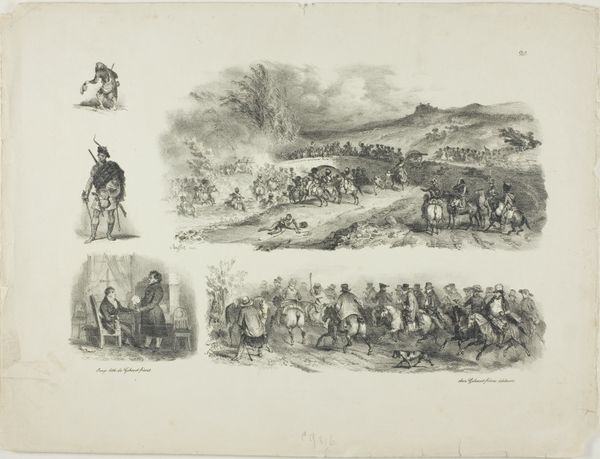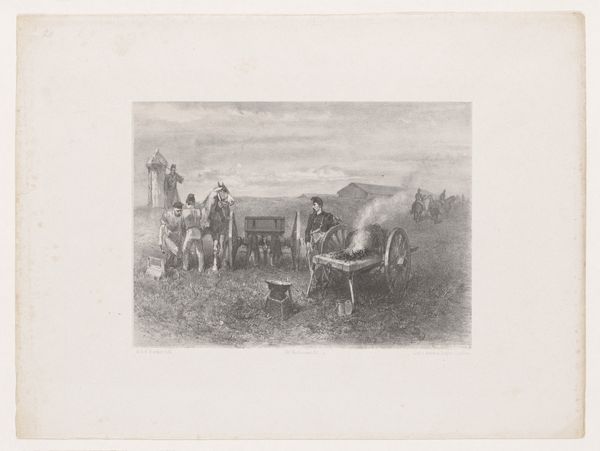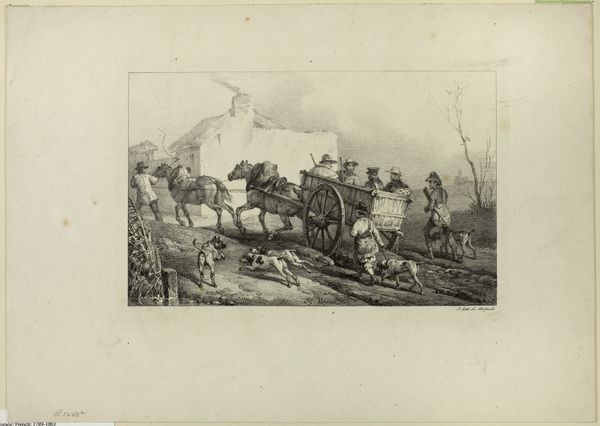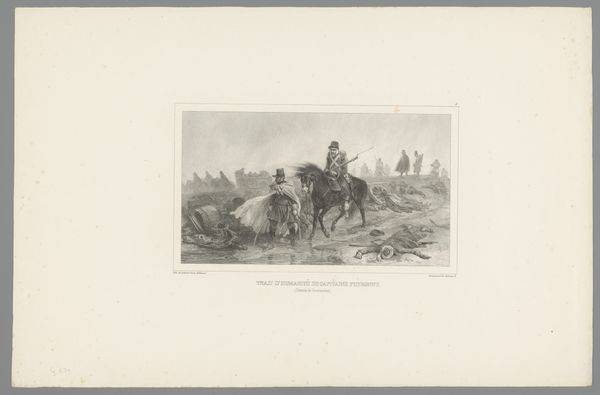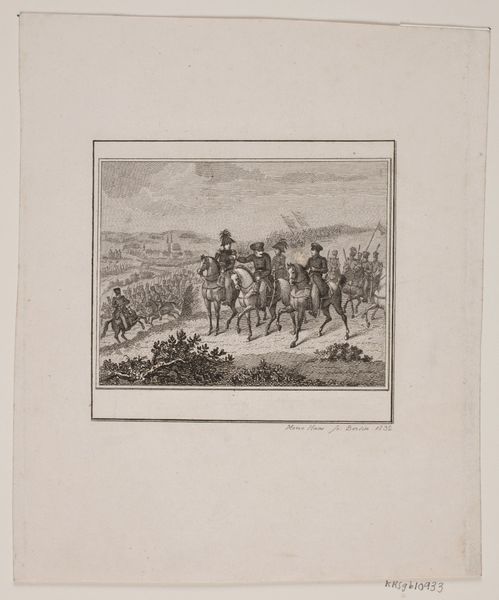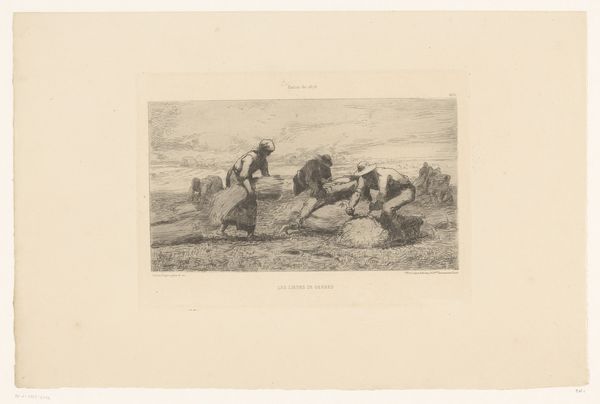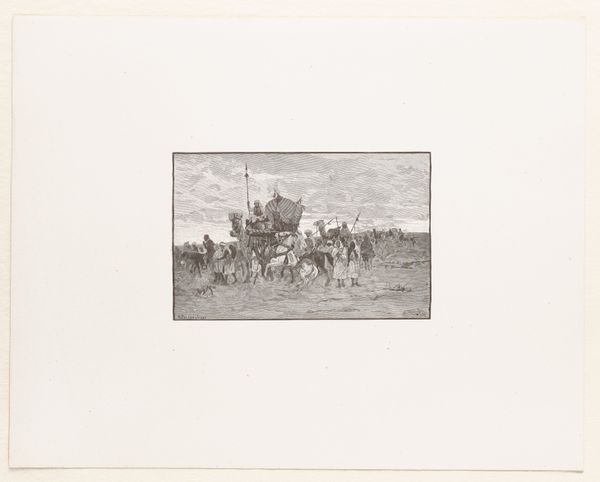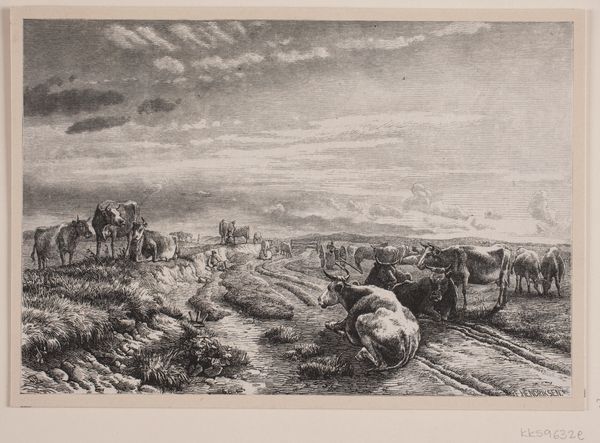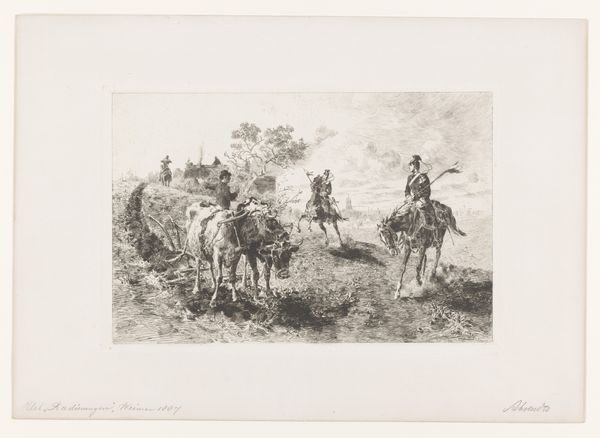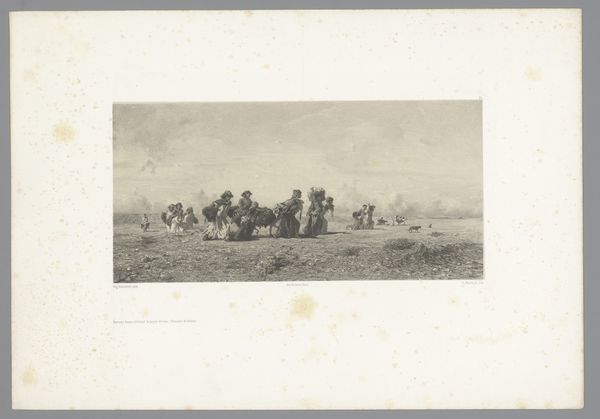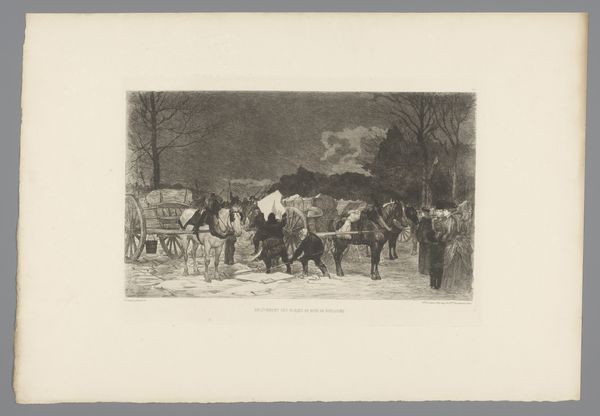
drawing, lithograph, print, paper, charcoal
#
drawing
#
narrative-art
#
lithograph
# print
#
landscape
#
paper
#
charcoal art
#
underpainting
#
romanticism
#
france
#
charcoal
Dimensions: 185 × 322.5 mm (image); 184.5 × 323 mm (primary support); 357 × 458 mm (secondary support)
Copyright: Public Domain
Editor: This is Auguste Raffet’s "Bouzeo Passage," a lithograph from 1839. There’s such a dynamic sense of movement here – a carriage struggling across what looks like a river, figures on horseback... What strikes you most about it? Curator: The scene’s depiction of labor, especially human and animal exertion, immediately jumps out. Considering its historical context—France in the 1830s—we have to ask, who are these laborers? What does it mean to portray this struggle during a time of burgeoning industrialization and shifting social hierarchies? The Romantic movement was interested in the sublime and the power of nature. How might Raffet's piece speak to those anxieties? Editor: That’s a really interesting point. I hadn't considered the social implications of portraying labor like this. So, you’re saying it’s not just a landscape, but also a social commentary? Curator: Precisely. It makes you wonder about class distinctions. Who is in the carriage, presumably shielded from the elements and physical demands, and who is pulling it across the river? The composition itself—the low angle emphasizing the climb, the division between those above and those below—underscores those differences. How do you think Raffet's choice of lithography affects the message? Editor: Well, lithography allowed for relatively inexpensive reproductions. Perhaps he wanted to disseminate this commentary widely? To reach those whose stories he's telling? Curator: Exactly! Mass production enables a wider audience, raising the consciousness and perhaps igniting dialogues amongst different classes of society. By choosing this medium, Raffet made the personal, the political, and the broadly accessible, all at once. What are your final thoughts? Editor: I had initially viewed this as a straightforward landscape scene. Now I see it as a complex reflection on class, labor, and the socio-political climate of 19th-century France, thanks to the historical context! Curator: Indeed, it's a powerful reminder that even seemingly simple images can be potent tools for social commentary and change.
Comments
No comments
Be the first to comment and join the conversation on the ultimate creative platform.
